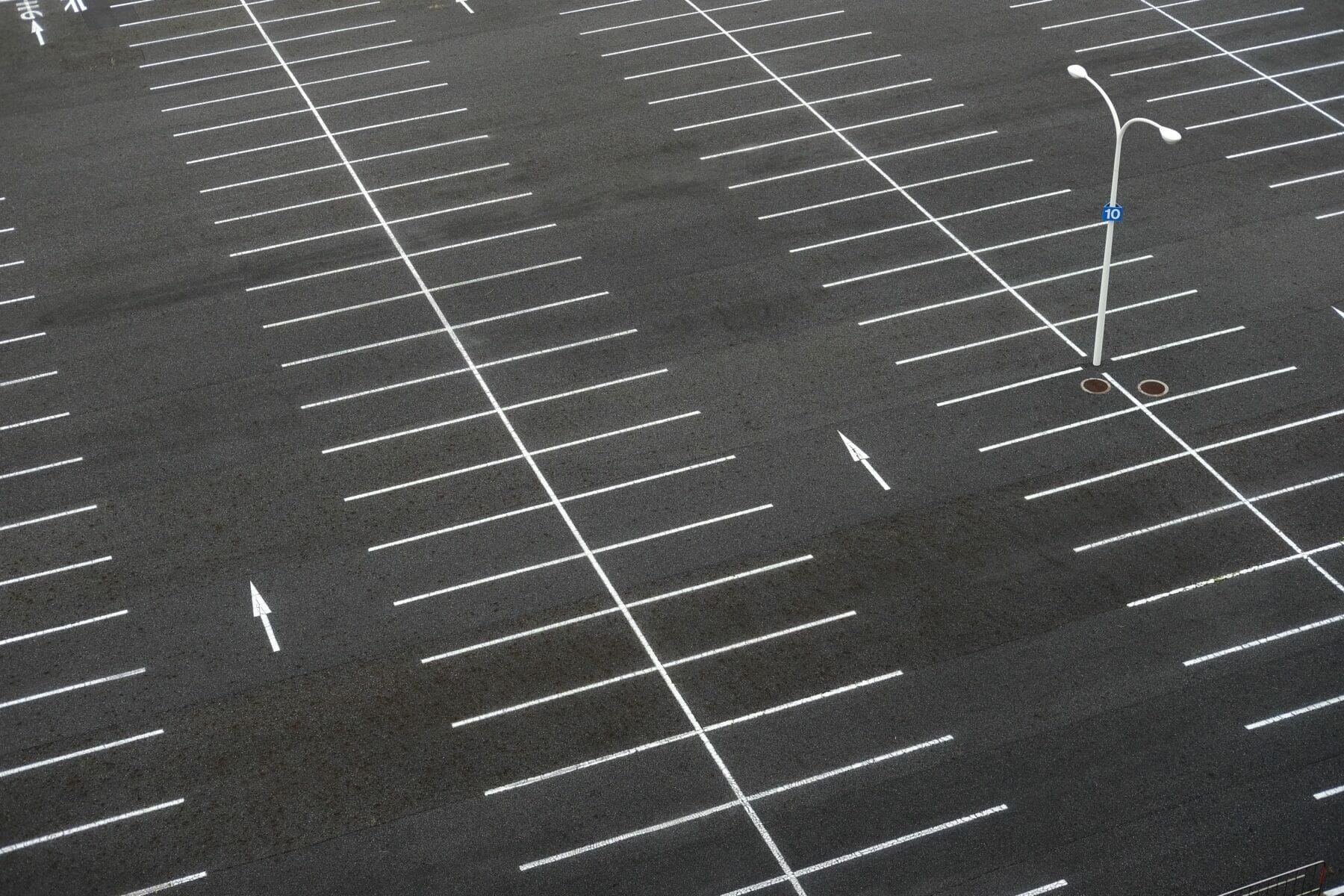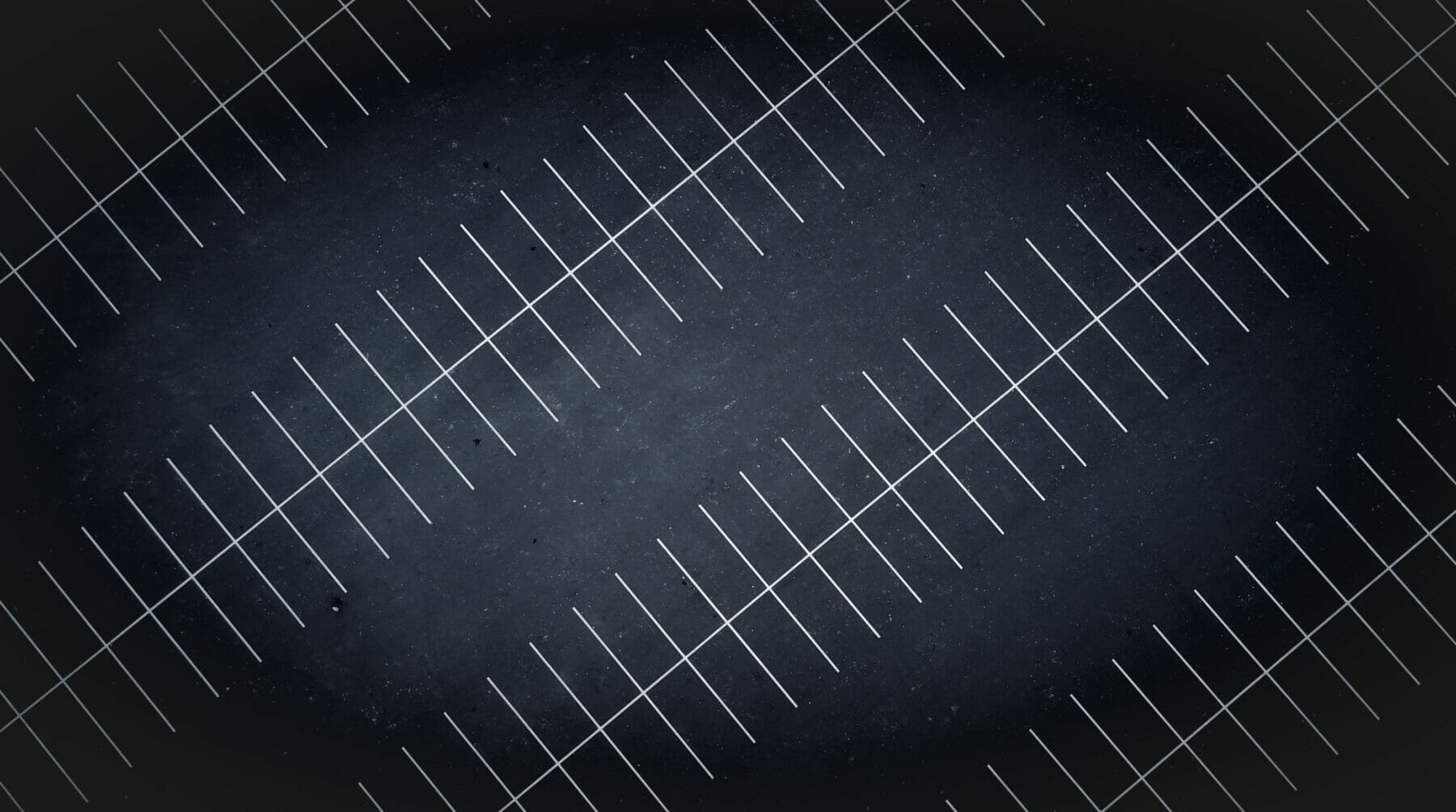It’s amazing how powerful a simple painted line can be. Think about it: you drive down roads daily with nothing but a painted line between you and the cars flying by in the opposite direction. Traffic lines are critical to organizing how we move about on roadways everywhere, but they’re just as important when cars eventually come to a stop.
In this article, our asphalt paving contractors are answering all your questions about parking lot lines, the process of striping, and where to turn if your parking lot could use a fresh coat of paint.

What are the lines in a parking lot called?
Parking lot lines are also known as pavement striping or marking. These straight, even lines are most often painted in yellow or white traffic paint — an extra durable, anti-fade thermoplastic resin paint that adheres well to concrete and asphalt. Sometimes, traffic paint can contain tiny flakes or beads of plastic or glass to give it a luminous and reflective appearance in the dark. This helps drivers see designated parking spots more easily at night.
How are the lines painted in a parking lot?
Pavement marking or asphalt companies are most often responsible for the lines you see on roads and in parking lots. Their painting process includes highly-specialized equipment to increase precision and accuracy.
To begin the process, the location of lines is often placed by hand, using string lines or other letters and markings. Then, the parking lot surface is prepped for painting by using an industrial blower to remove any surface debris like leaves or dirt. Finally, specially-trained painters prep the thermoplastic resin paint in machines that spray or roll paint using a guided mechanism to guarantee a crisp, straight line every time.

How do you choose the layout of parking lot lines?
Each parking lot is unique, so the most effective layout in each will vary. To determine the layout of parking lot lines, it’s important to look at a few key elements:
- Entrance and exit points of the lot: how will vehicles be positioned when they first arrive in the parking area?
- Ideal traffic flow: Is it more efficient to direct traffic one-way or to dedicate space for two-way traffic?
- Capacity needs: How many spaces does your lot need to have?
- Spacing and safety: What’s the best design that prevents overcrowding while still maximizing the space? You want to make sure it’s safe for vehicles to enter or exit a parking space even when the lot is at capacity.
Three of the most-used parking designs are angle parking, perpendicular parking, and parallel parking. In the right lot, each can be a smart design choice and it’s common for parking lots to use two or even three of these types of parking designs. The type of parking design you choose will depend on the factors listed above, as well as the physical area of your lot.
What are the dimensions for parking lot striping?
To fit standard vehicles on the road today, parking spaces are usually nine feet wide and 18 feet long. The painted striping that separates each space is usually 5 to 6 inches wide.
DIY or Professional? How to Stripe Your Parking Lot
Now that you’ve learned more about striping a parking lot, you may be wondering, “Can I stripe my own parking lot or should I hire a parking lot striping company?” The answer largely depends on how much work you’d like to put into striping your parking lot, the importance of the quality of the finished product, and the size and state of your parking lot.
For the confident DIY-er, striping a parking lot is doable. You can purchase traffic paint at many hardware stores, and creating a striping stencil (or buying one) can help create a fairly unified look to your parking stripes. The one benefit to the DIY approach is, of course, cost savings, but there are several drawbacks.
The finished product of a DIY striped parking lot will not be as clean and attractive as the work of a professional industrial painter or a professional asphalt company. Also, if your parking lot contains more than a few parking spaces, DIY-ing can turn into a time-consuming job quickly. Furthermore, if your parking lot needs to be re-striped because of faded lines, it’s likely time that your concrete or asphalt surface should also be sealcoated, repaired, or (at the least) inspected. Before you paint, first address the parking lot surface — failing to do so could result in deep cracks, potholes, or other unsightly disruptions to your parking lot that pose a hazard to drivers.
Asphalt surfaces should be sealcoated every few years to maintain an even, smooth finish. When you hire an asphalt paving contractor, parking lot striping is often an affordable add-on service that will complete your parking lot and remove the hassle of doing it yourself.

Call Morgan Pavement for Expert Parking Lot Striping
If you are looking for professional parking lot painting in Utah, you can’t beat the experience and quality offered by our team at Morgan Pavement. For over 30 years, our crews have been paving roads, parking lots, and more in Utah, Arizona, Nevada, and other areas across the West. We travel to you, offering comprehensive service such as inspections, asphalt repairs, ongoing sealcoating maintenance, and precision striping and marking designed to maximize your lot’s capacity.
To request a quote for parking lot striping in your lot, fill out our easy online form or give your nearest location a call.


